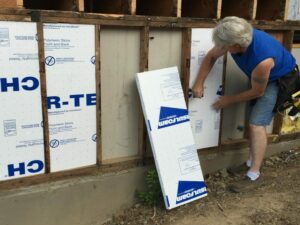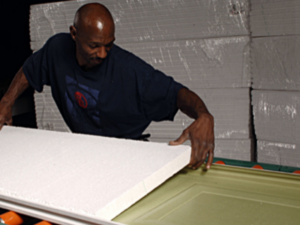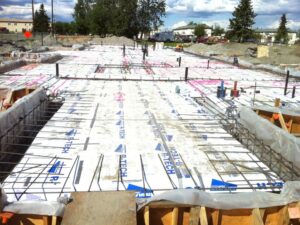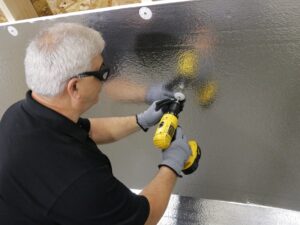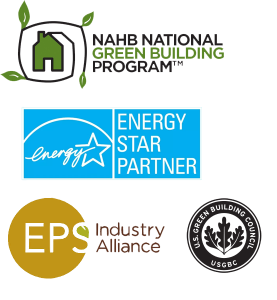Choosing the right insulation for an application can be complicated due to varying product types, thicknesses and long-term performance ratings. That’s why the ASTM C578 international standard was developed. This guide lists the various physical properties of both expanded polystyrene (EPS) rigid foam insulation and extruded polystyrene (XPS) rigid foam insulation. Contractors can use these standards to ensure they are not only picking an adequate insulation product for roofing and wall insulation but also one that will perform as needed throughout its service life. To use these standards properly, however, it is important for contractors to know how they work and how to apply them in different applications.
What does ASTM C578 mean for EPS foam?
ASTM C578 classifies several types of EPS foam products: Type I, Type VIII, Type II, Type IX, Type XIV and Type XV. E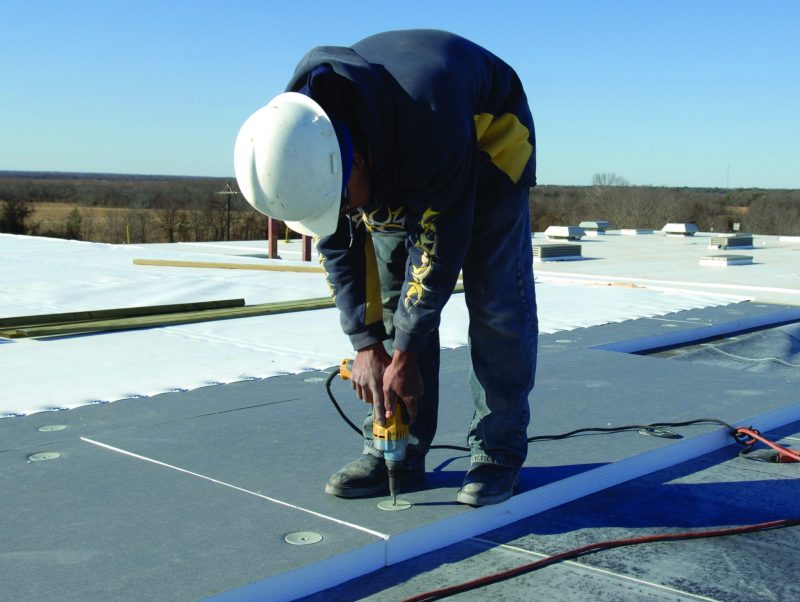 ach classification designates the product’s physical properties, such as density, compressive strength, flexural strength, thermal resistance, water vapor permeance and water absorption. Contractors looking to these standards can quickly confirm how a product will perform when used, which can take some of the uncertainty out of choosing the right insulation for a project.
ach classification designates the product’s physical properties, such as density, compressive strength, flexural strength, thermal resistance, water vapor permeance and water absorption. Contractors looking to these standards can quickly confirm how a product will perform when used, which can take some of the uncertainty out of choosing the right insulation for a project.
Further, with such definite classifications, industry organizations can easily make recommendations for specific applications. For example, the National Roofing Contractors Association (NRCA) can recommend roofing insulation that uses EPS foam be, at minimum, Type VIII. This means contractors can know exactly which type of insulation to use without having to consult multiple documents and standards.
Where can a contractor buy ASTM C578 compliant and labeled EPS foam?
Because ASTM C578 is an international classification standard, most EPS foam types fit one of the categories listed within the standard. As such, contractors can buy ASTM C578 EPS foam anywhere EPS foam is sold. They should make sure that the product is labeled and as C578 compliant and that a third-party certification agency is part of the quality control process. They should also be aware of what type of insulation (and its physical properties) to ensure they buy the correct insulation for their project.
Contractors looking for roof or wall insulation that meets their application needs should instead use the ASTM C578 standards as a guide. In addition, it is highly recommended to consult with relevant associations for best practice recommendations.
How ASTM C578 can help wall insulation applications
Contractors wanting to increase the insulation rating of a project’s walls should first consult Energy Star’s R-value recommendations by region. Once they know what minimum values they need, they can consult the ASTM C578 standards to see which type of EPS foam can most efficiently meet the insulation needs of their project. In this way, ASTM C578 can help contractors find the most effective way to insulate a wall.
While contractors can certainly choose other insulation types to achieve an adequate R-value, it should be noted that many insulation types can lose their R-values over time due to damage, moisture and settling. This means insulation that meets recommended R-values today may not in the future, reducing energy efficiency and occupant comfort. EPS foam, on the other hand, has a stable R-value. Its ability to insulate will remain consistent from the day it’s installed to the day it’s replaced.
Applying ASTM C578 when using foam to insulate roofs
Likewise, when shoring up roofing insulation, contractors can use ASTM C578 as a guide to identify which insulations will efficiently meet R-value goals. Not only can lightweight EPS foam meet the R-value requirements of many regions, but it is also easy to install. Contractors and homeowners alike no longer have to deal with fiberglass splinters from difficult-to-cut batts or complicated machinery for blown-in insulation. EPS foam panels can be cut to size and installed with standard tools. This, in combination with its stable R-value, makes EPS foam an ideal material for adding or upgrading roof insulation.
ASTM C578 is a means to an end
Most construction standards can be challenging to parse and are required. ASTM C578 is different. This international standard creates a classification system so contractors can easily reference which types of insulation will fit their needs.
Like any tool, it can be used properly and improperly. When contractors consult the ASTM C578 standards in conjunction with recommendations from industry associations, they can rest assured they are choosing the right insulation type for their projects. And when they use EPS foam to meet their insulation goals, they can know that it will be easy to install and retain its R-value year after year.
For more information about EPS foam’s qualities, check out this comparison chart.

